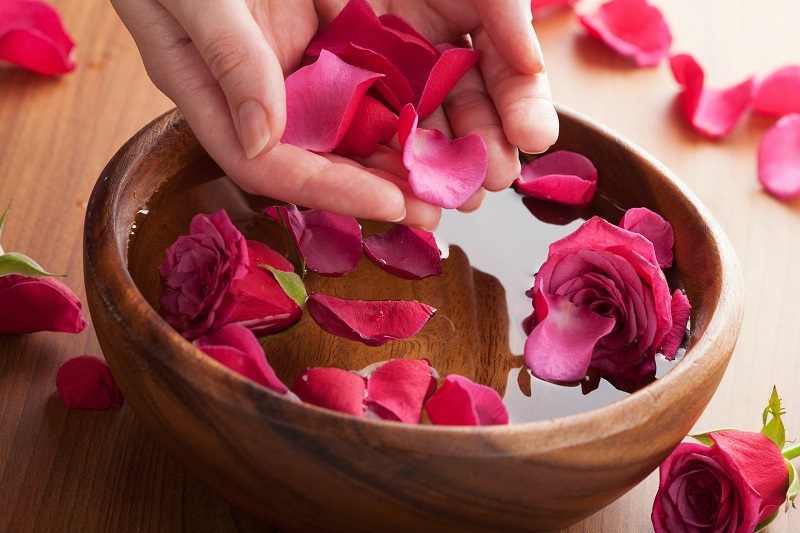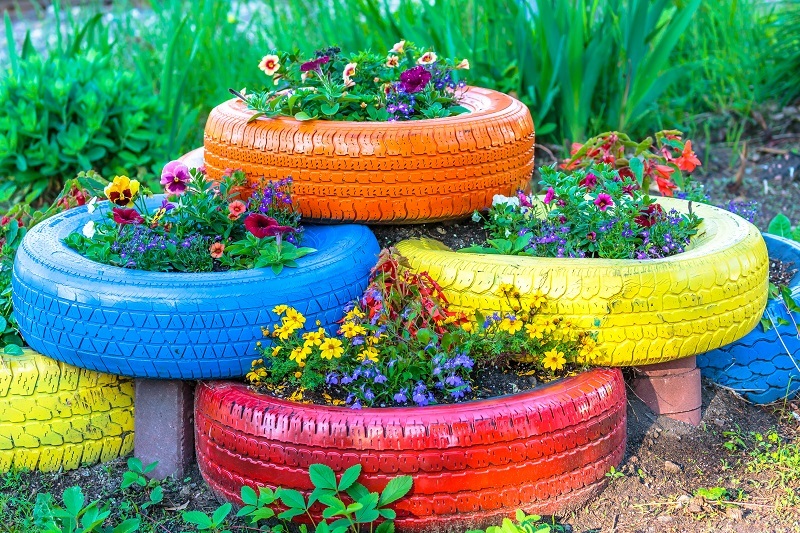Extend Your Poinsettias' Lifespan with These Tips
Posted on 21/08/2025
Extend Your Poinsettias' Lifespan with These Vital Tips
Poinsettias are an iconic addition to the winter season, renowned for their vibrant red and green foliage that brings festive cheer to any space. However, many people wonder how to prolong the life of their poinsettia plants beyond the holidays. With the right care and attention, these beautiful plants can thrive for months and even be rebloomed the next year. This comprehensive guide will provide you with the best techniques to extend your poinsettias' lifespan, keeping them healthy and stunning well into the new year and beyond.

Understanding the Poinsettia: More Than Just a Holiday Plant
Poinsettias (Euphorbia pulcherrima) originate from Mexico and flourish as perennials in their native environment. While often treated as temporary decorations, poinsettias are capable of living for many years with proper care. If you want to keep your poinsettias looking fresh and encourage longevity, it's essential to understand their unique requirements and natural growing cycles.
The Symbolism and Seasonal Appeal of Poinsettias
- Symbol of Christmas: Poinsettias have become synonymous with holiday celebrations.
- Variety of colors: Modern hybrids come in red, white, pink, and variegated hues.
- Year-round beauty: With the right conditions, they offer year-round appeal beyond December.
Choosing a Healthy Poinsettia for Longevity
The path to stretching your poinsettia's life starts with selecting a healthy specimen. Before bringing a poinsettia home, examine the plant carefully:
- Look for rich, deep-colored bracts (the colored leaves that resemble petals) and dark green foliage.
- Avoid plants with wilting or yellowing leaves, as these may be signs of stress.
- Check the soil--it should be moist but not soggy or completely dry.
- Inspect for pests on leaves, stems, and underneath the foliage.
- Ensure the plant is not displayed in a drafty or overly warm location at the store.
Best Practices for Poinsettia Plant Care
To extend the life of your poinsettia, focus on providing an optimal environment tailored to its needs. Keep in mind that poinsettias are sensitive to temperature, water, and light levels.
Poinsettia Watering Guidelines
- Consistent moisture: Water thoroughly when the soil surface feels dry to the touch, but never let the plant sit in water.
- Drainage is essential: Make sure excess water can escape; remove decorative foil or poke drainage holes.
- Avoid water on the leaves: Wet foliage can encourage fungal issues.
- Reduce watering as flowering bracts fade, allowing the plant to prepare for dormancy.
Poinsettia Lighting Requirements
- Bright, indirect sunlight is ideal--at least 6 hours per day. Direct sun can scorch leaves while too little light causes leaf drop.
- Rotate the pot every few days to encourage even growth.
- Avoid cold drafts from doors or windows or hot air from radiators and fireplaces.
Temperature and Humidity Preferences
- Poinsettias thrive in temperatures between 65-75?F (18-24?C).
- Sudden changes can cause leaf drop, so maintain stable indoor temperatures.
- Keep away from cold windows and never let the plant touch chilly glass.
- Maintain moderate humidity--if your indoor air is dry, place a tray with pebbles and water under the pot (without letting roots sit in water).
Fertilizing for Long-Term Health
- Fertilize only after the plant has finished blooming, typically in late winter or early spring.
- Use a balanced, all-purpose houseplant fertilizer every 2 to 4 weeks during active growth.
- Never fertilize when the plant is in bloom as this can stress the roots.
- Reduce feeding during its dormant period (generally after the holidays).
Common Poinsettia Problems and Solutions
Even with attentive care, your poinsettia may exhibit signs of stress. Understanding common issues enables you to keep your poinsettia alive longer:
Poinsettia Leaf Drop
- Usually triggered by temperature shock, drafts, or over/under-watering.
- Move your plant to a more stable location, water only when the topsoil is dry, and avoid sudden changes in environment.
Addressing Poinsettia Pests and Diseases
- Whiteflies, aphids, and spider mites occasionally appear. Rinse the leaves gently and use insecticidal soap if needed.
- Watch for powdery mildew or root rot--both signs of too much water or poor air circulation.
- Remove damaged leaves to encourage healthy new growth.
How to Make Your Poinsettia Rebloom Next Year
Many wonder: Can you get a poinsettia to bloom again? The answer is yes, with patience and the right technique. Extending your poinsettia's stay past the holidays opens the door for another vibrant bloom next winter!
Step-by-Step Guide to Reblooming Poinsettias
- Pruning: In late winter or early spring, once the leaves begin to fade, cut the stems down to about 4-6 inches, leaving at least one node on each stem.
- Allow For Dormancy: Let the plant rest in a cooler, still sunny location with reduced watering. Don't fertilize during this period.
- As new growth appears in spring, resume regular watering, feeding, and move the plant to a brighter spot.
- In late May or June, repot in fresh soil if it appears root-bound.
- Pinch back the new shoots periodically through summer to encourage bushiness (stop pinching in late August).
- Photoperiod (Short-Day Treatment): From late September, give your poinsettia 14-16 hours of absolute darkness each night for 8-10 weeks. Cover the plant with a box or move it into a closet from evening until morning, then return it to bright light during the day. Consistent treatment triggers the colorful bracts to form.
- By late November or early December, you should see colorful bracts reappear, marking blooming season!
Tips to Keep Your Poinsettias Alive All Year
If you want to prolong your poinsettia's beauty throughout the entire year, consider these additional care tips:
- Avoid temperature extremes: Don't place your plant in direct draft or close to heating vents.
- Keep away from fruit bowls, as ripening fruit gives off ethylene gas, which can age the plant prematurely.
- Maintain regular cleaning--gently dust leaves to maximize photosynthesis and prevent pests.
- Inspect often for early signs of disease or pest infestation.
- If you move the plant outdoors in summer, keep it in a shaded area and transition it gradually to prevent sunburn.
Poinsettia Safety: Myths and Facts
A common misconception is that poinsettias are highly toxic; however, while their sap may cause mild skin irritation or an upset stomach if ingested, they are not deadly to humans or pets. Still, it's wise to keep them out of reach of curious pets and children and to wash hands if you touch the sap.
Frequently Asked Questions About Extending Poinsettia Lifespan
How long can a poinsettia live indoors?
With correct care, indoor poinsettias can remain attractive for 4-6 months and survive for years if allowed to regrow and rebloom each holiday season.
What is the biggest mistake people make with poinsettias?
The most common error is overwatering and exposing poinsettias to drafts or temperature extremes, which can cause leaf drop and premature decline.
Should I transplant my poinsettia after the holidays?
Yes, if you wish to keep it for multiple seasons. Repotting in spring, once active growth resumes, gives your poinsettia plant a fresh start and prevents it from becoming root-bound.

Recap: Key Steps to Prolonging Your Poinsettia's Lifespan
- Choose a healthy, robust plant from the start.
- Maintain steady, moderate temperatures and humidity.
- Water only when needed and ensure proper drainage.
- Provide abundant, indirect natural light daily.
- Fertilize after blooming and repot when needed.
- Observe your plant for pests and diseases, and act promptly at the first signs of stress.
- Follow the detailed reblooming process to coax your poinsettia to display its signature color every season.
Conclusion: Enjoy Vibrant Poinsettias Year After Year
Unlocking the secret to a long-lasting poinsettia isn't as daunting as many think. By applying these expert tips for poinsettia longevity, you'll enjoy lush greenery and vibrant color far beyond the winter holidays. Not only will you get more value from your festive favorite, but you'll gain the joy of nurturing a beautiful plant all year long. Embrace these care techniques and watch as your poinsettias flourish and brighten your home for many seasons to come!
Latest Posts
How to Choose Seasonal Bouquets for Hackney Central Events
Sustainable Flower Sourcing: Supporting [AREA]'s Green Spaces
Extend Your Poinsettias' Lifespan with These Tips





